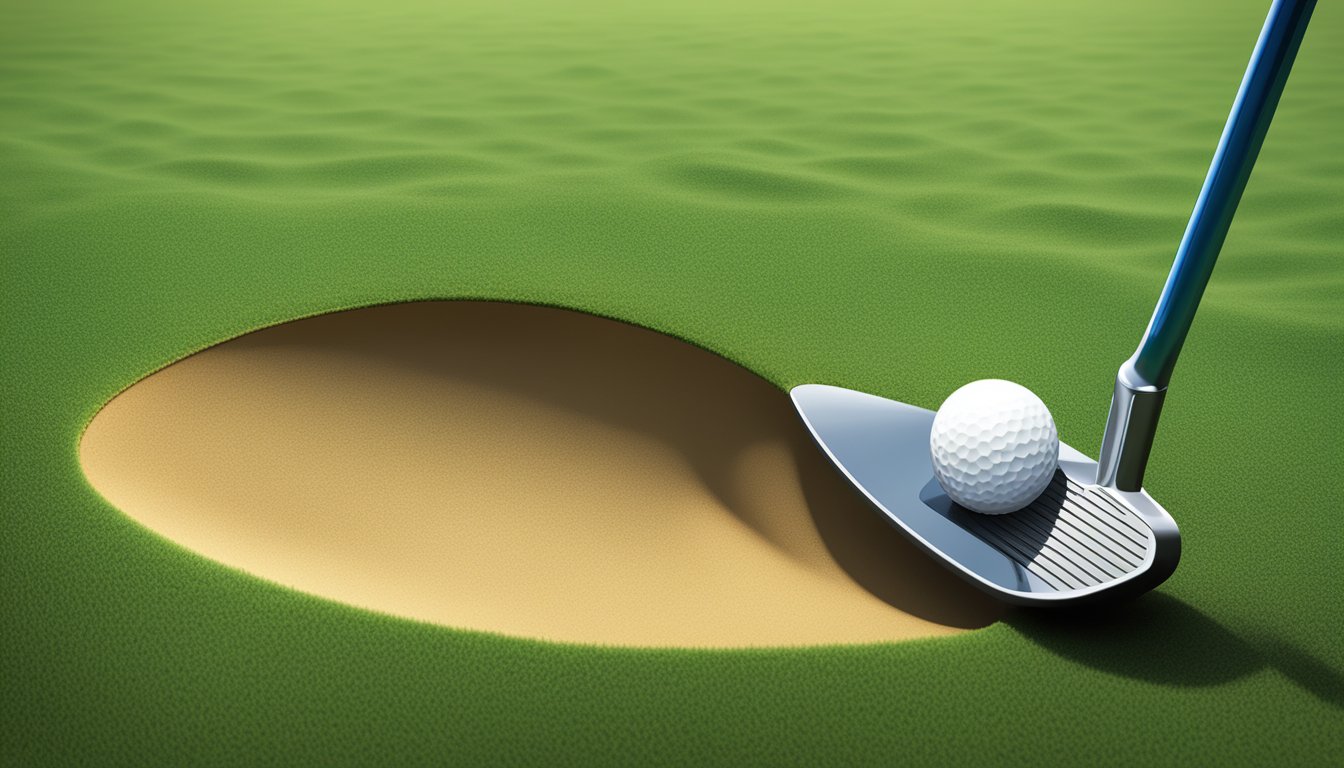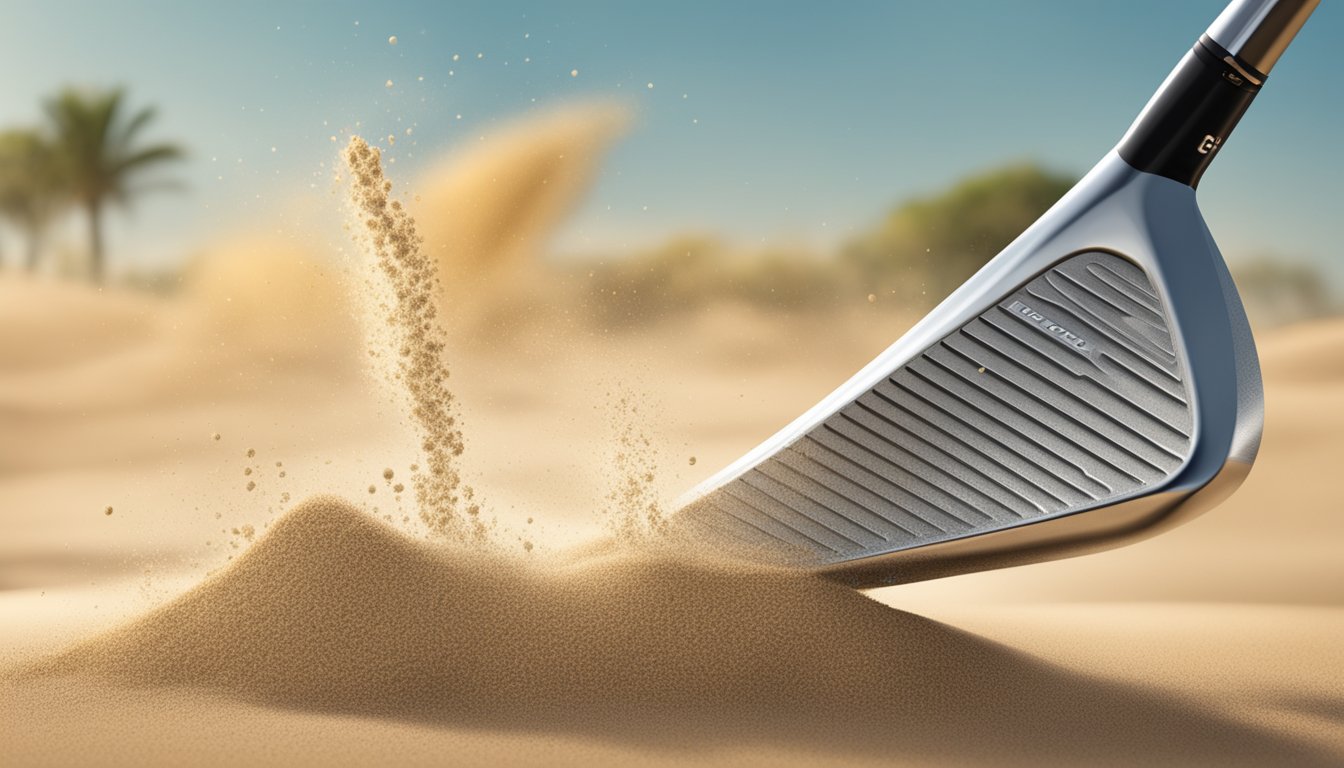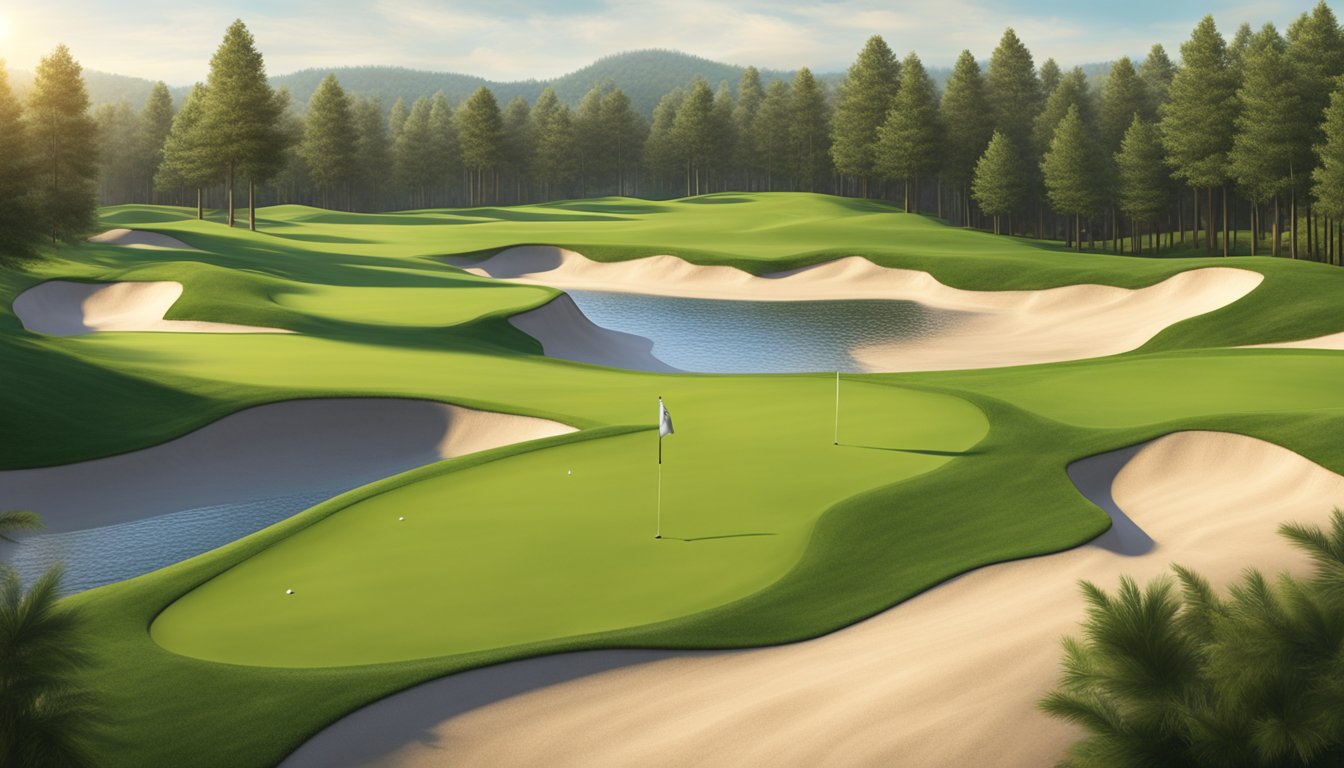Are you new to golf and wondering how many degrees is a sand wedge? Or are you a seasoned golfer who needs a refresher on the basics? Either way, understanding the different types of golf clubs and their uses is crucial to improving your game. Sand wedges are one of the most important clubs in your bag, especially when it comes to getting out of bunkers and other tricky situations on the course.


Sand wedges typically have a loft angle between 54 and 58 degrees, which makes them ideal for hitting shots out of sand traps and other soft lies. The higher loft angle allows the club to slide under the ball and lift it out of the sand, while the bounce on the sole of the club prevents it from digging too deeply into the sand. However, the exact degree of loft that you need will depend on your individual swing and the type of shots you want to hit.
Key Takeaways
- Sand wedges typically have a loft angle between 54 and 58 degrees.
- The higher loft angle allows the club to slide under the ball and lift it out of the sand, while the bounce on the sole of the club prevents it from digging too deeply into the sand.
- The exact degree of loft that you need will depend on your individual swing and the type of shots you want to hit.
Understanding Golf Clubs
https://www.youtube.com/watch?v=geqDlcPrmYE&embed=true
Golf clubs are an essential part of the game of golf. They come in different types and sizes, each with a unique purpose. The most common types of golf clubs are irons, woods, wedges, and putters.
Irons are used for hitting the ball from the fairway or rough. They come in numbered sets, with the lower numbers having less loft and the higher numbers having more loft. The most common irons are the 3-iron, 4-iron, 5-iron, 6-iron, 7-iron, 8-iron, and 9-iron.
Woods are used for hitting the ball off the tee or from the fairway. They have a larger head and longer shaft than irons, which allows for greater distance. The most common woods are the driver and fairway wood.
Wedges are used for hitting the ball out of bunkers or for short approach shots around the green. They have a high loft, which allows the ball to be hit high in the air and land softly on the green. Wedges come in different types, including pitching wedge, gap wedge, sand wedge, and lob wedge.
Putters are used for rolling the ball along the green and into the hole. They have a flat face and are designed for accuracy rather than distance.
When selecting a golf club, it is important to consider your skill level, swing speed, and the type of shot you want to make. A complete set of golf clubs typically includes a driver, fairway woods, hybrids, irons, wedges, and a putter.
Sand wedges are a type of wedge that is used for hitting the ball out of sand bunkers or for short approach shots around the green. They have a high loft, typically between 54 and 58 degrees, which allows the ball to be hit high in the air and land softly on the green [1]. Sand wedges also feature a unique design element called bounce, which refers to the angle of the sole relative to the ground when you address the ball [3]. This helps control how much the club “skids” through the sand or rough.
In summary, understanding the different types of golf clubs and their purposes can help you make better decisions on the course. When selecting a golf club, consider your skill level, swing speed, and the type of shot you want to make. Sand wedges are a type of wedge that is used for hitting the ball out of sand bunkers or for short approach shots around the green. They have a high loft, typically between 54 and 58 degrees, and feature a unique design element called bounce.
The Science of Sand Wedges

If you are a golf enthusiast, you know the importance of having the right club for each shot. One of the most crucial clubs in your bag is the sand wedge. It is designed to help you get out of bunkers and rough patches around the green. But how many degrees is a sand wedge, and what makes it unique? Let’s explore the science of sand wedges.
Sand Wedge Degree
The degree of a sand wedge refers to the loft angle of the clubface. The loft angle is the angle between the face of the club and the ground. Sand wedges typically have a loft angle between 54 to 58 degrees, with the standard being 56 degrees. The loft angle helps to lift the ball out of the sand and onto the green, making it easier to get your ball closer to the pin.
Bounce Angle
Another critical factor in sand wedges is the bounce angle. The bounce angle is the angle between the leading edge of the club and the sole. It helps to prevent the club from digging into the sand, allowing the club to glide through the sand smoothly. Sand wedges typically have a bounce angle between 10 to 14 degrees, with the standard being 12 degrees.
Spin
The design of the grooves on the clubface also plays a significant role in the performance of a sand wedge. The grooves help to create spin on the ball, allowing it to stop quickly on the green. The number and depth of the grooves can vary between manufacturers and models, but most sand wedges have around 15-20 grooves.
Loft Angle
The loft angle of a sand wedge is not the only angle that affects its performance. The lie angle also plays a crucial role. The lie angle is the angle between the shaft of the club and the ground. It affects the direction of the ball and the amount of spin it generates. Most sand wedges have a lie angle between 64 to 66 degrees.
In conclusion, sand wedges are an essential club for any golfer. With a loft angle between 54 to 58 degrees and a bounce angle between 10 to 14 degrees, they are designed to help you get out of bunkers and rough patches around the green. The grooves on the clubface help to create spin, allowing the ball to stop quickly on the green. So, make sure you have the right sand wedge in your bag to help you improve your game.
How to Use a Sand Wedge
https://www.youtube.com/watch?v=ngc3oUZHPG0&embed=true

When it comes to your short game, a sand wedge is an essential club to have in your bag. With a loft typically between 54 to 58 degrees, the sand wedge is designed to help you escape bunkers by quickly lifting the ball up and out of the sand. Here are some tips on how to use a sand wedge effectively:
Technique
To use your sand wedge effectively, it is important to have the right technique. When hitting a bunker shot, open the face of your club and aim to hit the sand a couple of inches behind the ball. This will help create the necessary lift to get the ball out of the bunker and onto the green.
Swing Speed
When hitting a sand shot, it is important to use a slower swing speed than you would with a regular shot. This allows you to make better contact with the sand and create the necessary lift to get the ball out of the bunker.
Club Design
The design of the sand wedge is also important when it comes to bunker play. The sole of the club is designed to help the club glide through the sand rather than digging into it. This helps create the necessary lift to get the ball out of the bunker.
Distance Control
When hitting a sand shot, it is important to focus on distance control. The sand wedge is designed to create backspin on the ball, which helps control the distance the ball travels. Practice hitting shots of varying distances to improve your distance control with your sand wedge.

Accuracy
Accuracy is key when it comes to bunker play. Focus on hitting the sand a couple of inches behind the ball and make sure to follow through on your swing. This will help create the necessary lift to get the ball out of the bunker and onto the green.
Grip
When hitting a sand shot, it is important to have a light grip on the club. This allows you to make better contact with the sand and create the necessary lift to get the ball out of the bunker.
Pitch Shots
The sand wedge is also a great club to use for pitch shots around the green. With a loft of between 54 to 58 degrees, the sand wedge is designed to create backspin on the ball, which helps control the distance the ball travels. Use your sand wedge on pitch shots around the green to improve your accuracy and distance control.
In conclusion, the sand wedge is an essential club to have in your bag when it comes to your short game. With the right technique, swing speed, and club design, you can use your sand wedge to escape bunkers and hit pitch shots with accuracy and distance control.
Choosing the Right Sand Wedge
https://www.youtube.com/watch?v=2682C-9aS_I&embed=true

When it comes to golf wedges, the sand wedge is one of the most important clubs in your bag. It is designed to help you get out of bunkers and other sandy areas around the green. But how many degrees is a sand wedge and which one should you choose?
The standard loft for a sand wedge is usually around 56 degrees. However, some manufacturers make sand wedges with lofts ranging from 54 to 58 degrees. The loft of your sand wedge will depend on your personal preferences, skill level, and the types of shots you want to play.
If you already have a pitching wedge and a gap wedge, you might want to consider a sand wedge with a loft of 56 degrees. This will give you a good yardage gap between your pitching wedge and your sand wedge. But if you’re looking for more versatility around the green, you might want to consider a sand wedge with a loft of 58 degrees.
When choosing a sand wedge, consider the leading edge and the bounce angle. The leading edge is the part of the clubface that makes contact with the ball first. A sand wedge with a wider sole and a more rounded leading edge can be easier to hit out of bunkers and rough.
The bounce angle refers to the angle between the leading edge and the trailing edge of the club. A sand wedge with a higher bounce angle can be better for players who tend to hit the ball fat. On the other hand, a sand wedge with a lower bounce angle can be better for players who hit the ball thin.
Manufacturers offer a variety of sand wedges with different features and designs. Some sand wedges have a cavity back, which can help distribute the weight of the club more evenly. Others have a wider sole, which can help you hit better shots from the sand.
Ultimately, the right sand wedge for you will depend on your individual preferences and your golf game. Take some time to practice with different sand wedges and find one that feels comfortable and performs well for you. With the right wedge setup, you can improve your short game and lower your scores on the course.
Frequently Asked Questions

What is the loft of a standard sand wedge?
A standard sand wedge has a loft angle between 54 and 58 degrees. According to TheGolfitems, it is an essential tool for golfers to improve their short game and lower their scores.
What degree is a typical pitching wedge?
A typical pitching wedge has a loft angle between 44 and 48 degrees, making it perfect for approach shots onto greens, as mentioned by Golf Clubs Advisor.

What is the loft angle of a utility wedge?
A utility wedge, also known as an approach wedge or gap wedge, has a loft angle between 50 and 54 degrees. According to Golf Digest, it is designed to fill the gap between the pitching wedge and sand wedge.
What are the different types of wedges and their degrees?
There are four types of wedges: pitching wedge, gap wedge, sand wedge, and lob wedge. The pitching wedge has a loft angle between 44 and 48 degrees, the gap wedge has a loft angle between 50 and 54 degrees, the sand wedge has a loft angle between 54 and 58 degrees, and the lob wedge has a loft angle between 58 and 64 degrees.
What wedges should be included in a standard set?
A standard set of golf clubs should include at least three wedges: pitching wedge, sand wedge, and lob wedge. The gap wedge is also commonly included in a standard set, bringing the total to four wedges.
Can a 58 degree wedge be used in sand?
Yes, a 58 degree wedge can be used in sand. However, it may not be the best option for all golfers. According to My Golf Essentials, the bounce angle of the wedge plays a crucial role in determining its effectiveness in sand. A 58 degree wedge with a high bounce angle may work well in soft sand, while a low bounce angle may be more effective in firm sand.











